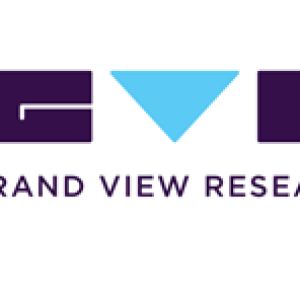Waterless Cosmetics Market To Hit Value .2 Billion By 2028 |Grand View Research, Inc.Posted by Mrudula Anil Karmarkar on November 23rd, 2022 The global waterless cosmetics market size is expected to reach USD 17.2 billion by 2028, registering a CAGR of 10.6% during the forecast period, according to a new report by Grand View Research, Inc. The rising inclination of consumers toward environment-friendly and sustainable beauty products, coupled with the growing global awareness about the benefits of waterless products, has projected lucrative market growth in the forecast period. Moreover, the increasing demand for high-priced premium cosmetics products due to the rising disposable income is driving the global market. An increase in awareness regarding clean beauty has led to the need for healthier and more sustainable alternatives in the cosmetics industry, which in turn increases the demand for waterless cosmetics products. Rising interest to maintain a youthful appearance and improve the lifestyle are some major factors driving the market for waterless cosmetics. Furthermore, technological advancements and increasing modernization of production techniques, and rising demand from emerging economies, will further create new opportunities for the water-free cosmetics market during the projection period. However, the high cost of products in the market and the huge amount required for research and development activities are the major factors hindering the market growth. Before the COVID-19 pandemic, there was a modest increase in global demand for water-free cosmetics. After the epidemic, major global markets faced a double shock. As brick-and-mortar retail is the primary distribution channel for the beauty industry, store closures across regions had a significant impact on the growth of the beauty products space, including water-free cosmetics. The lockdown situation observed during the COVID-19 pandemic showed a negative impact on the waterless cosmetics industry, due to the suspended or delayed supply of raw material used for preparing beauty care products. Demand for eco-friendly cosmetics has increased after the pandemic, with stay-at-home orders and safer-at-home advice being issued across the globe. The haircare segment is expected to register the highest CAGR of 11.2% from 2022 to 2028. The increasing popularity of the waterless formula due to more concentration and higher efficacy of hair care products has led to the upsurge of this segment. Moreover, technological advancements and developments in the manufacturing of waterless products are the major driving factors for the market. The online segment is expected to advance at a substantial CAGR of 11.2% in the global market. The growth of the online distribution channel is attributed to the availability of the online platform via shopping portals and mobile apps. It is also observed that companies, distributors, and retailers are adopting online platforms to sell waterless cosmetics. As a result of this, the online segment is gaining traction compared to offline. To Request Sample Copy of this report, click the link: https://www.grandviewresearch.com/industry-analysis/waterless-cosmetics-market-report/request/rs1 With the growing presence of social media and beauty influencers, the demand for water-free cosmetics has surged due to their skincare benefits. In addition, sustainability concerns along with increasing demand for water-free skin care products have increased the production of water-free cosmetics. To address the industry's growing concerns about plastic waste and water waste, beauty bloggers or influencers are continuously promoting waterless beauty products. Furthermore, the growing demand for cruelty-free, non-toxic, and eco-friendly products presents lucrative growth opportunities for market players. In addition, companies are looking to maintain their brand image and gain customer loyalty by offering innovative products as per customer specifications and analyzing consumer behavior patterns. Beauty & personal care industry giants, as well as emerging brands, have begun adopting water-free beauty products with a focus on sustainability. L’Oréal has committed to reducing its water use (per finished unit) by 60%, and by 2030, Unilever has set a goal of halving the environmental impact of the production and use of its products, including its water usage. Some of the world's completely water-free makeup brands such as Lush, Ethique, and Pinch of Colour have championed the concept of waterless products. Waterless Cosmetics Market Report Highlights
The COVID-19 pandemic-induced lockdowns had disturbed transportation and suspended the supply of raw materials for a particular time period, which affected the manufacturing units. The prolonged curfews and lockdown across the globe have hugely impacted the lifestyle and health & well-being of the consumers. Beyond that, the outbreak also encouraged consumers to adapt to a Do-it-Yourself (DIY) or self-care routine. This change in consumer attitude has further impacted the sales of beauty products, including water-free cosmetics. In addition to this, the pandemic has further encouraged ethical buying, where consumer attention has largely shifted to local and regional brands. Water is widely used as a filler in cosmetics to ensure the longevity of products, as it prevents contamination and is more economical. Regardless of its beneficial properties, mixed water presents a number of problems. Extensive use of water can be a breeding ground for micro-organisms. Therefore, numerous preservatives are added to water-rich products to extend their shelf life and limit the growth of micro-organisms. Comparing the challenges posed by moisture-rich products to the beneficial properties of water-free cosmetic products, the market is expected to exhibit positive growth in the coming years. The growing demand for new beauty trends and innovative products, increasing use of natural ingredients, and attractive packaging can be viewed as an opportunity by the waterless cosmetics manufacturers to drive their growth. In addition to this, the rising awareness about waterless beauty products and increasing demand for premium cosmetics products due to the rising disposable income are driving the global market. List of Key Players in the Waterless Cosmetics Market
Like it? Share it!More by this author |


